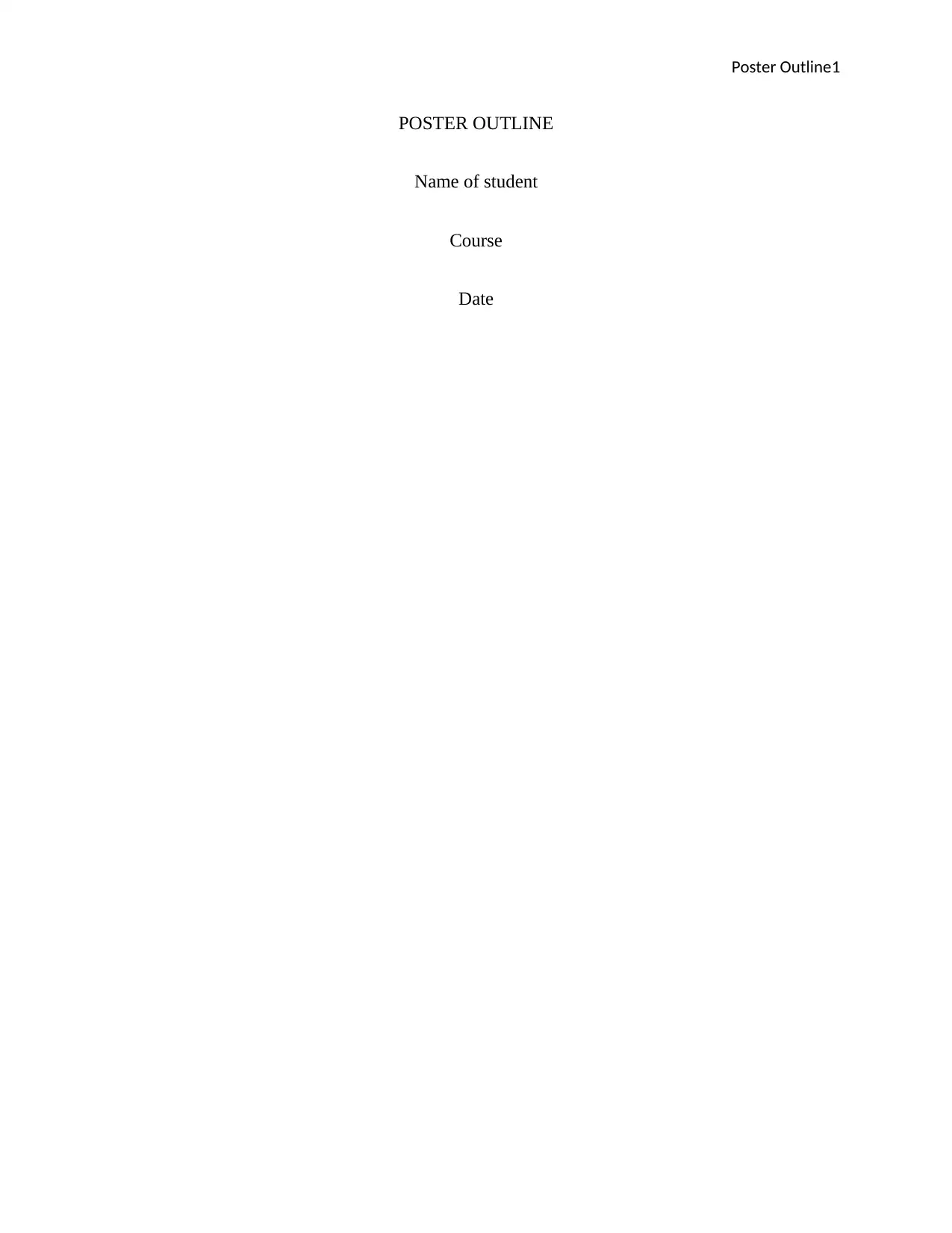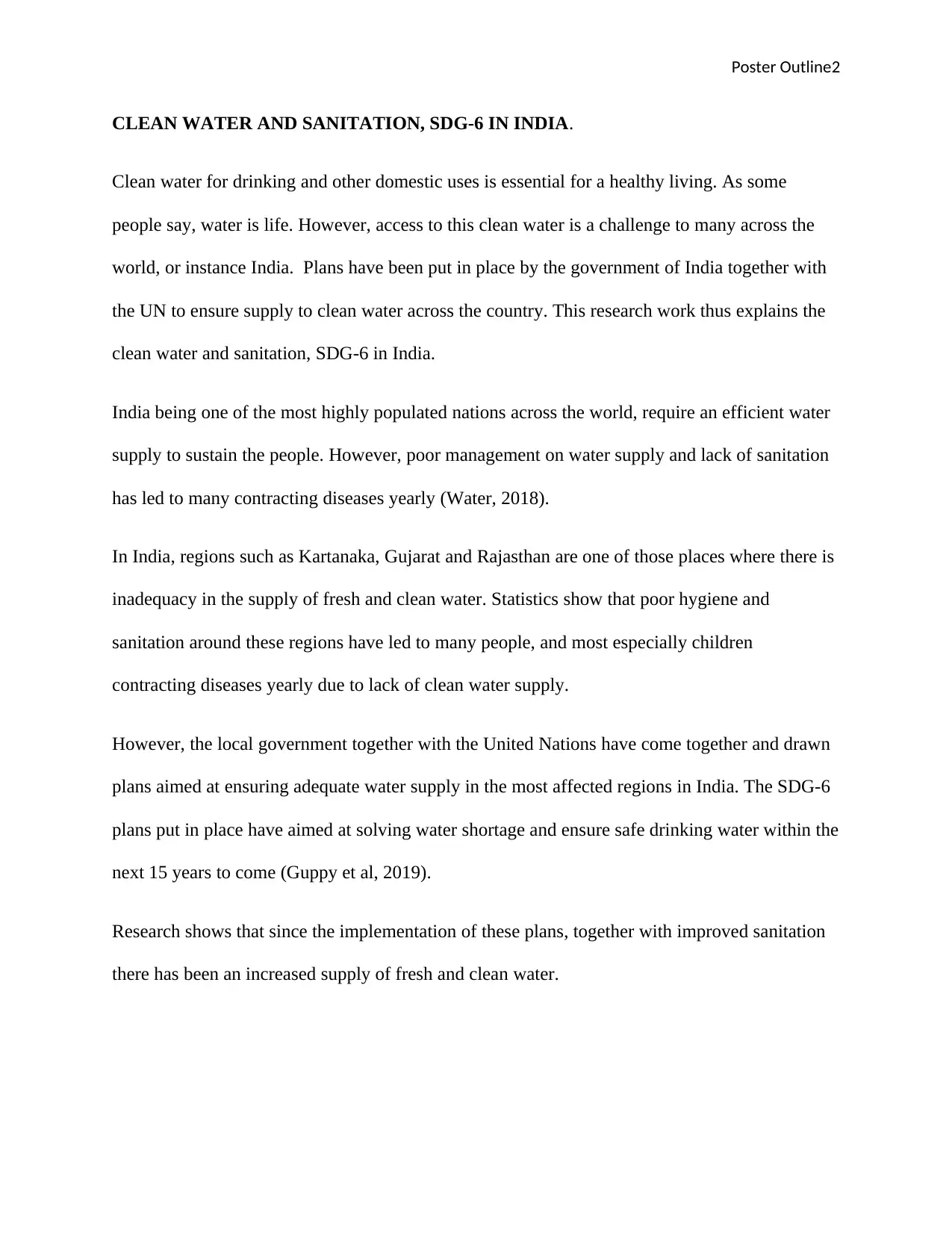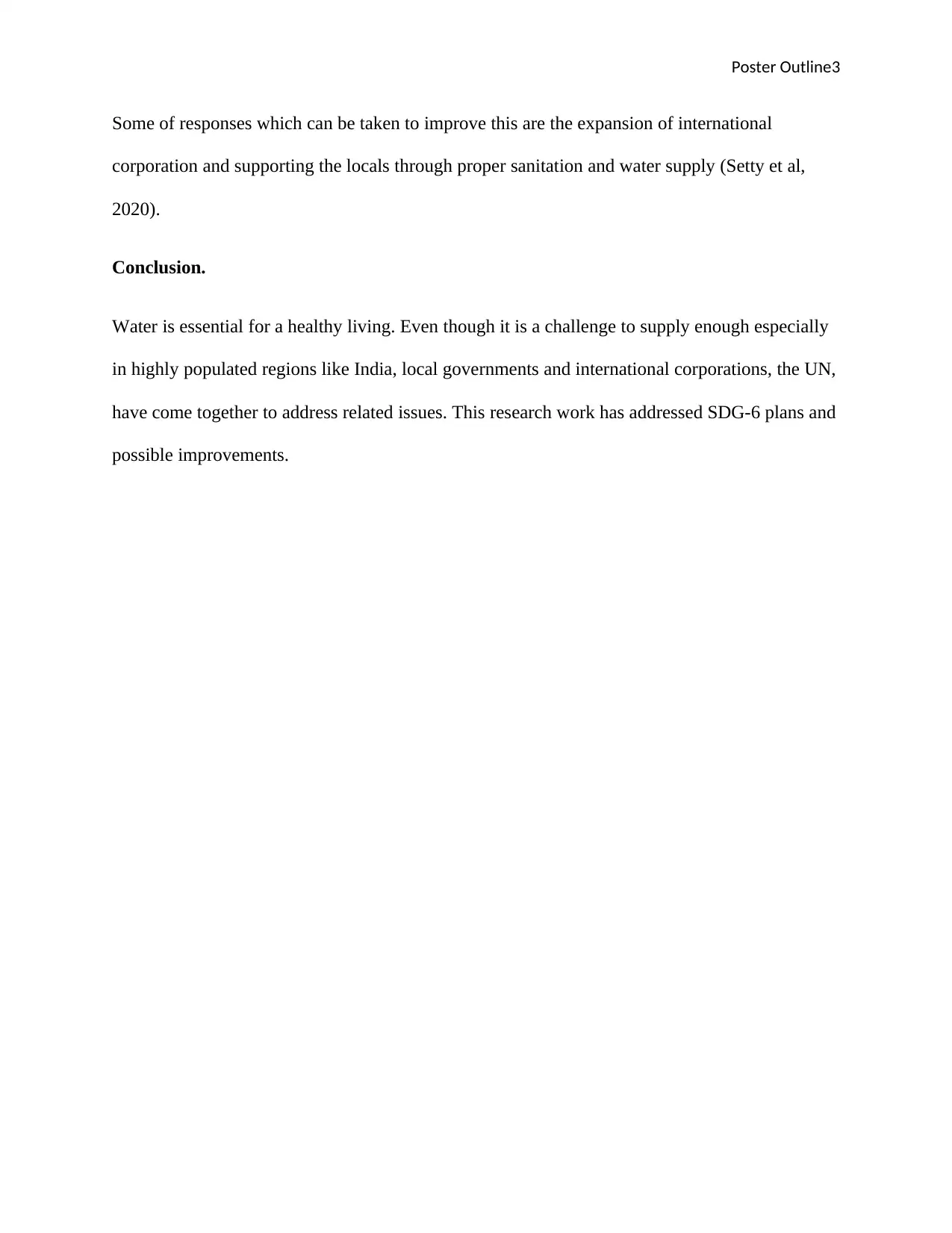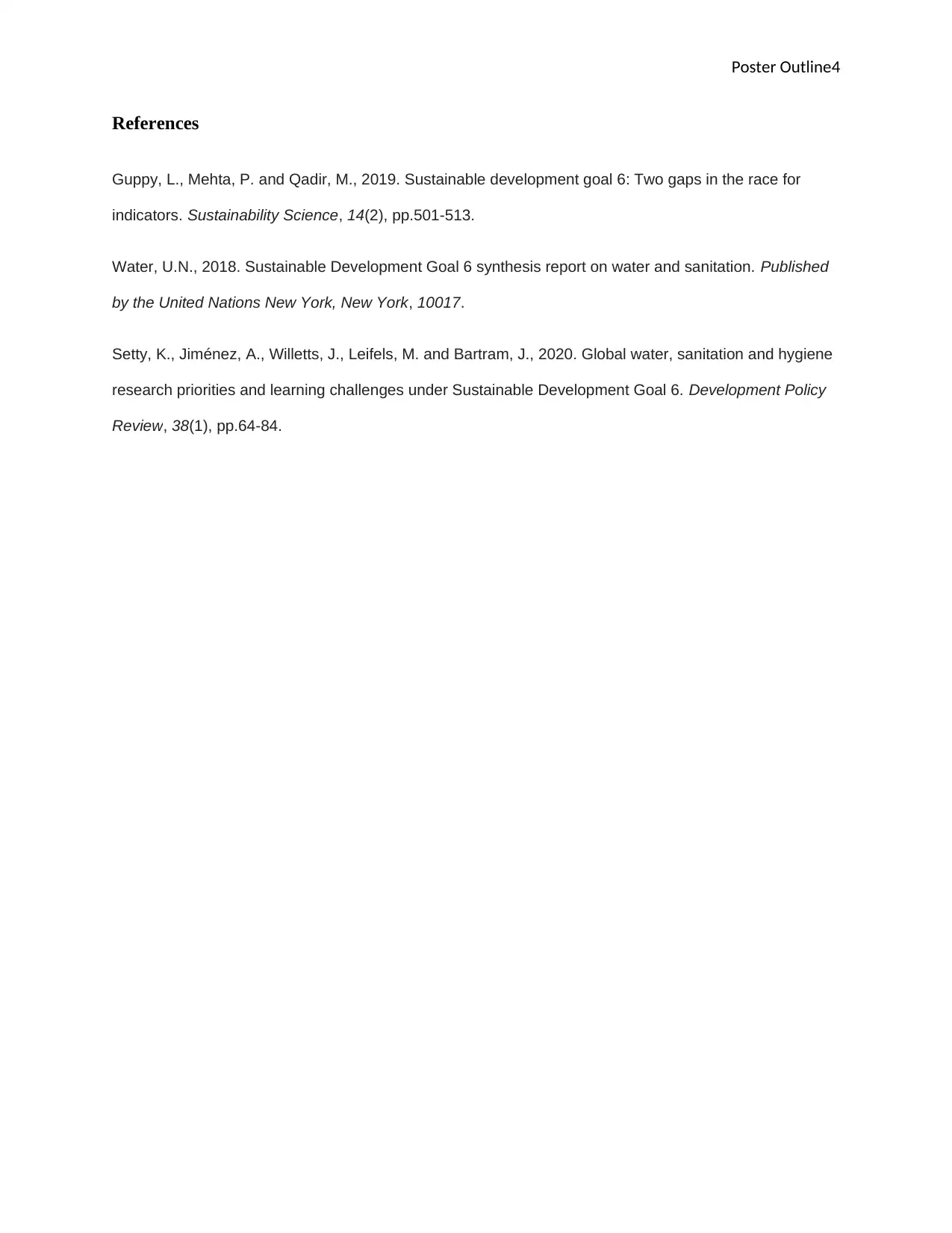India: Clean Water and Sanitation (SDG-6) Report Analysis
VerifiedAdded on 2022/08/03
|4
|504
|19
Report
AI Summary
This report outlines the challenges and solutions related to clean water and sanitation (SDG-6) in India. It highlights the critical need for efficient water supply in a highly populated nation, emphasizing the impact of poor management and lack of sanitation on public health. The report discusses the implementation of SDG-6 plans by the Indian government and the UN, focusing on the expansion of international cooperation and local support to improve water supply and sanitation, particularly in regions like Karnataka, Gujarat, and Rajasthan. It references the importance of clean water for healthy living and addresses the complexities of providing adequate water in densely populated areas. The report includes a brief overview of SDG-6 plans, potential improvements, and the importance of international and local collaboration to address related issues. The research also references the importance of hygiene and sanitation in the affected regions, and how the local government together with the United Nations have come together and drawn plans aimed at ensuring adequate water supply in the most affected regions in India. Finally, the report includes references to support the findings.
1 out of 4









![[object Object]](/_next/static/media/star-bottom.7253800d.svg)